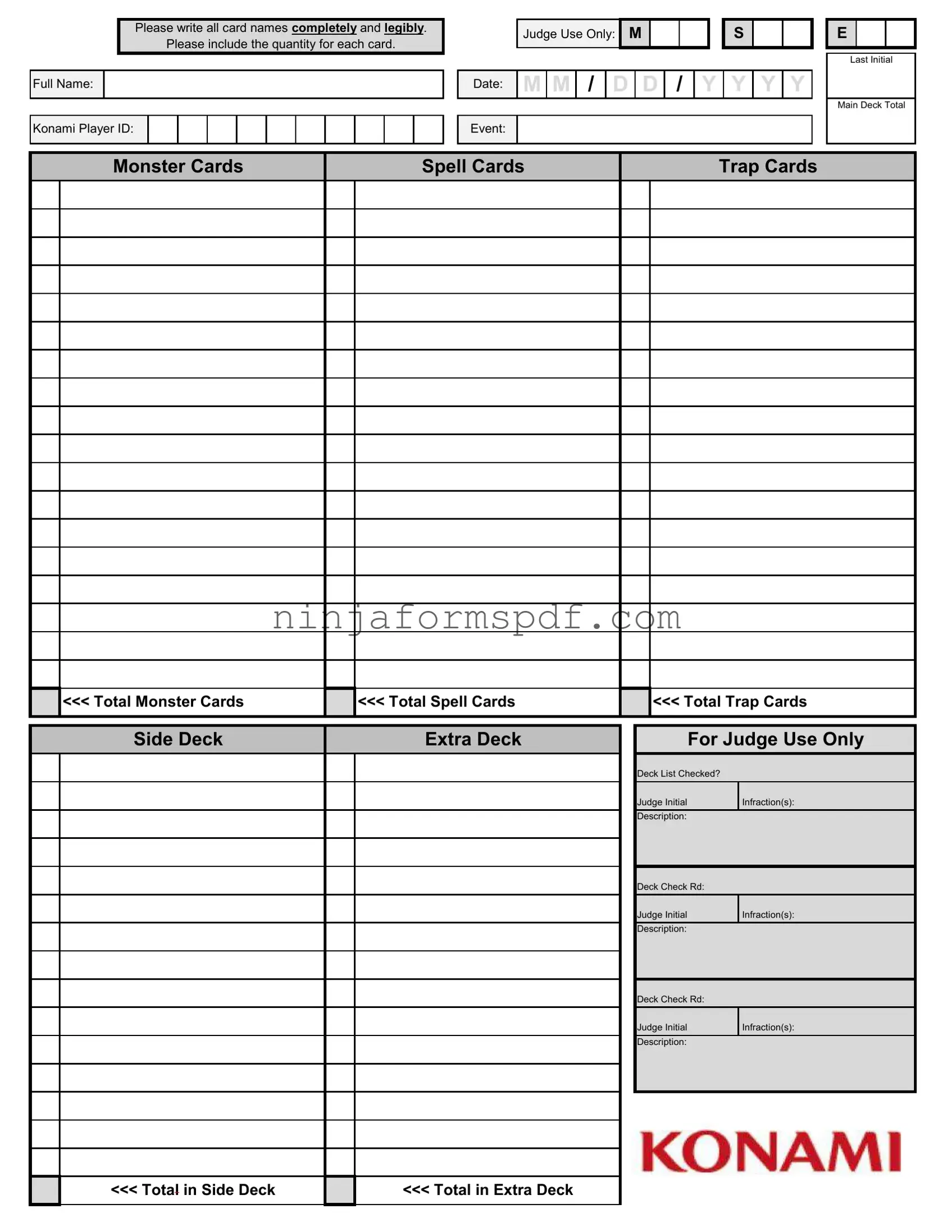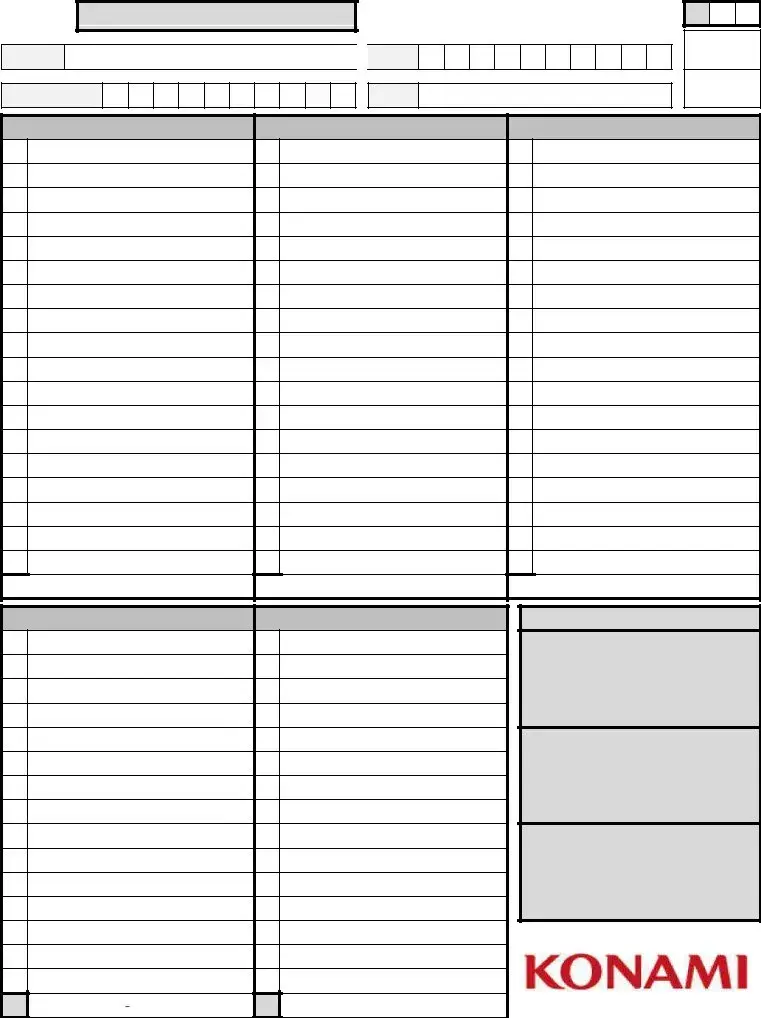The Konami Decklist form shares similarities with a tournament registration form in sports, such as for a tennis or a golf tournament. Both forms collect participant information, including full name and an identification number, akin to a player ID in the context of a Konami tournament. They require the player to declare certain specifics ahead of time—just as decklists demand details of the game deck, registration forms might need specifics about equipment or team members. The key purpose is to ensure all participants are adequately registered and their entries meet the event's requirements.
Similar to an inventory checklist used in warehousing, the decklist form serves to itemize components, in this case, the cards in a player's deck, alongside their quantities. Inventory checklists also meticulously document item counts and specifics to track assets and ensure accuracy in orders or stock levels. Both documents are essential for verification and ensuring preparedness—be it for a game or fulfilling inventory requirements.
Academic test forms, especially those requiring students to list their answers or essays, bear resemblance to the Konami Decklist form. Both necessitate clear, legible handwriting and comprehensive answers, whether it's the name of a card or an essay response. Similarly, they each have sections utilized exclusively by the overseeing authority, such as for grading or noting infractions.
Tax forms, while varying greatly in content, are similar in the necessity for individuals to list information comprehensively and accurately, like the requirement to detail card names and quantities on the decklist form. Both sets of documents are rigorously reviewed by an authoritative body, whether it be the IRS or tournament judges, who check for compliance and correctness, and note any infractions or discrepancies.
The decklist mirrors a ballot form used in elections, where clarity and completeness of entries are crucial to ensure the voter’s choices are correctly registered and tallied. In both instances, there's a process in place to verify that the submitted information complies with the rules—whether those rules govern the suitability of a deck in competition or the eligibility of a vote in an election.
A patient intake form in a medical setting also shares characteristics with the decklist form. Each collects critical information upfront—on the one hand, the health background and symptoms of a patient, and on the other, the specifics of a player's game deck. Both forms serve a preparatory purpose, setting the stage for the professionals to evaluate the provided information thoroughly.
Loan application forms are parallel to the decklist form in their requirement for detailed, accurate information, which will be scrutinized by an authority—lenders in one case, and judges in another. The integrity of the information provided on both forms directly influences the outcome, affecting loan approval or game eligibility.
Event feedback forms resemble the decklist form in their structured collection of specific inputs from participants. Just as feedback forms capture attendees' opinions on various aspects of an event, decklist forms catalog the components of a player’s deck for review. Both serve to gather detailed insights—either for improving future events or for ensuring fairness and compliance in tournament play.
Rental agreement forms, much like the decklist form, require participants to provide detailed, accurate descriptions of what is being exchanged—properties and terms in one case, and card decks in another. Both documents are legally binding and include sections for official use only, such as for noting infractions or conditions.
The customs declaration form required by travelers when entering a country parallels the decklist form in its role as a comprehensive list of items being brought into a new environment. Travelers must declare items accurately and completely, much as players must list their deck components. Both forms are subject to verification by authorities who ensure that all entries meet regulatory standards.




 <<< Total Monster Cards
<<< Total Monster Cards <<< Total Spell Cards
<<< Total Spell Cards <<< Total Trap Cards
<<< Total Trap Cards